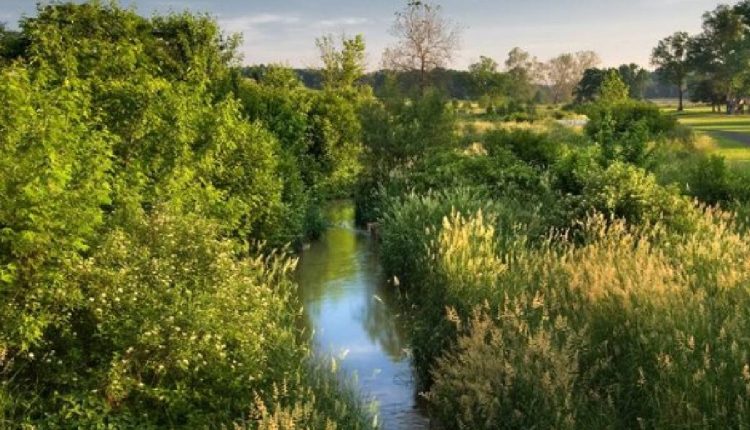Riparian buffer zones—the strips of vegetation lining rivers, streams, and other water bodies—are nature’s first line of defense against pollution and erosion. Over the years, human development, agriculture, and climate change have degraded these natural buffers, placing ecosystems and water quality at risk. Thankfully, riparian buffer restorations are reversing this damage, providing a practical and powerful solution for communities, landowners, and environmentalists alike.
In this blog post, we explore what riparian buffers are, why their restoration matters, and how restoring these natural zones benefits both the environment and society.
What Are Riparian Buffers?
A riparian buffer is a vegetated area (usually forested) next to a stream or river that helps shade and protect the water from the impact of adjacent land use. These zones are vital to the health of aquatic ecosystems. A healthy riparian buffer often includes a mix of trees, shrubs, and grasses that filter pollutants, stabilize stream banks, and create habitats for diverse species.
Why Are Riparian Buffers Degraded?
Several human activities have contributed to riparian zone degradation:
-
Agricultural runoff: Fertilizers, pesticides, and livestock waste flow into waterways.
-
Urban development: Impervious surfaces increase runoff, erosion, and habitat loss.
-
Deforestation: Logging or clearing vegetation near water bodies destabilizes banks.
-
Climate change: Increases in storm intensity and frequency lead to more erosion.
As riparian zones are lost or degraded, the water bodies they protect become more vulnerable to pollution, sedimentation, flooding, and ecological collapse.
The Importance of Riparian Buffer Restorations
Restoring riparian buffers is not just an act of environmental goodwill—it’s a practical, science-based response to some of our most pressing water and ecosystem management challenges.
1. Water Quality Improvement
Restored buffers trap pollutants such as nitrogen, phosphorus, heavy metals, and sediment before they reach water bodies. This reduces algal blooms and eutrophication in lakes and rivers.
2. Erosion Control
Deep-rooted native vegetation stabilizes streambanks, reducing erosion during storms and high-flow periods.
3. Biodiversity Enhancement
Riparian zones are rich in plant and animal life. Restoration helps rebuild critical habitats for birds, amphibians, pollinators, and aquatic species.
4. Flood Mitigation
Vegetated buffers slow down surface runoff and increase groundwater infiltration, reducing flood risks downstream.
5. Carbon Sequestration
Trees and shrubs in riparian zones absorb and store carbon, making restoration a tool in climate change mitigation.
Best Practices for Riparian Buffer Restoration
Effective restoration requires thoughtful planning, execution, and maintenance. Key steps include:
1. Site Assessment
Understand the existing land use, soil type, slope, hydrology, and ecological conditions.
2. Plant Selection
Use native species suited to local climate and soil. These plants are better adapted to the environment and provide appropriate food and shelter for wildlife.
3. Zoning the Buffer
A well-structured buffer has three zones:
-
Zone 1 (closest to the water): Trees and shrubs for stability and shading.
-
Zone 2: Mixed vegetation to filter pollutants and provide habitat.
-
Zone 3 (edge of buffer): Grasses and herbaceous plants to slow runoff.
4. Exclusion of Livestock and Human Disturbance
Fencing and signage help protect newly restored areas.
5. Ongoing Maintenance
Includes invasive species control, monitoring plant survival, and periodic replanting.
Case Studies and Success Stories
-
Chesapeake Bay Watershed: Riparian buffer restoration projects in Maryland and Pennsylvania have led to measurable reductions in nitrogen and phosphorus pollution entering the bay.
-
California’s Central Valley: Restoration of riparian corridors has improved salmon spawning habitats, contributing to fishery recovery.
-
Australia’s Murray-Darling Basin: Community-driven efforts to restore native riparian vegetation have strengthened resilience against drought.
Challenges in Riparian Buffer Restorations
-
Funding and Resources: Restoration can be costly, requiring long-term investment.
-
Landowner Cooperation: Private land access is often necessary; building trust and offering incentives is key.
-
Invasive Species: Without maintenance, invasive plants can take over restored sites.
-
Climate Variability: Restoration plans must account for changing precipitation patterns and increased droughts or floods.
How You Can Get Involved
-
Landowners: Partner with conservation organizations or your local soil and water conservation district to restore buffers on your property.
-
Volunteers: Join local restoration events or stream cleanups.
-
Policy Advocates: Support legislation and funding for watershed restoration and conservation programs.
-
Educators: Raise awareness of the importance of riparian health in schools and communities.
Conclusion: A Return to Balance
Riparian buffer restorations are a powerful way to restore ecological balance, protect our water resources, and prepare our landscapes for a changing climate. Whether you’re a policymaker, landowner, or simply someone who cares about nature, riparian restoration offers a clear path to healing the environment.
Let’s rebuild these green guardians—one stream at a time.


Comments are closed.